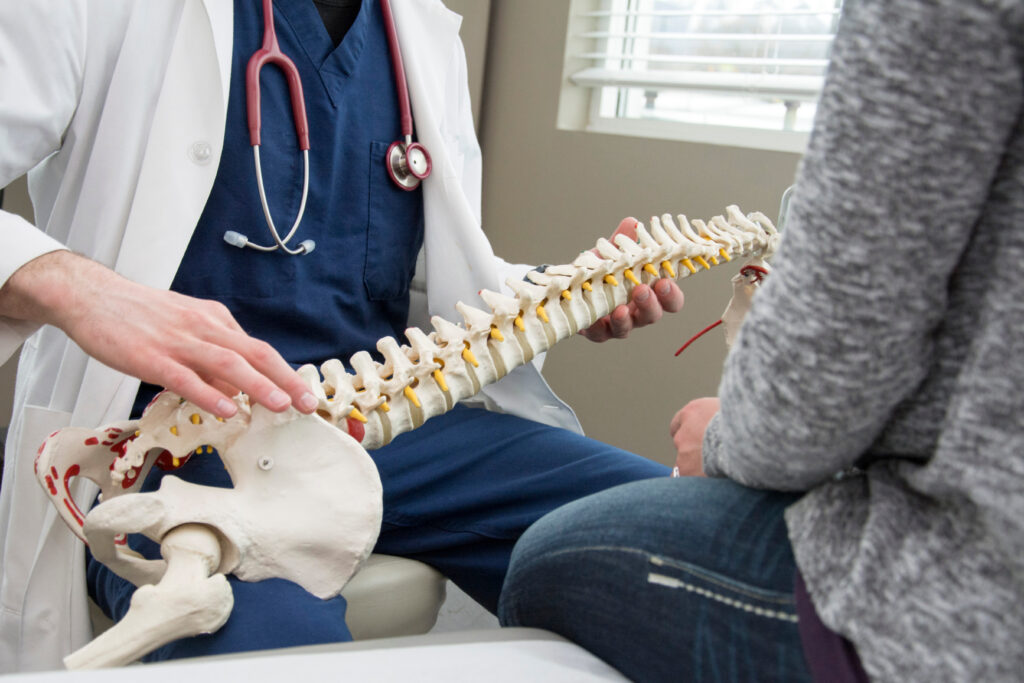How to Plan for Visits to the Best Spine Surgeons in St Louis MO
How to Plan for Visits to the Best Spine Surgeons in St Louis MO
Blog Article
An Overview of Back Problems That Commonly Cause Surgical Therapies
Back problems such as herniated discs, spinal stenosis, and degenerative disc illness regularly require medical interventions when conventional therapies fail to relieve relentless symptoms. These problems not only result in considerable pain yet can additionally drastically impair daily functioning and total high quality of life. Recognizing the nuances of each problem and the equivalent medical options, such as discectomy or back blend, is essential for effective administration. As we check out these problems additionally, it ends up being evident that the decision-making process surrounding medical treatment is multifaceted and warrants cautious consideration.
Herniated Discs
Although lots of people with herniated discs may find alleviation through traditional treatments, surgery ends up being a necessary consideration when signs linger or aggravate - best spine surgeons in st louis mo. A herniated disc happens when the soft internal gel of a spinal disc extends via its outer layer, possibly leading and compressing close-by nerves to discomfort, tingling, or weakness in the extremities
Traditional administration generally consists of physical treatment, discomfort medications, and corticosteroid shots, which intend to decrease inflammation and boost function. In situations where these techniques fall short to reduce incapacitating signs and symptoms, medical alternatives may be checked out.
One of the most usual operation for herniated discs is a discectomy, which includes the elimination of the herniated part of the disc to eliminate stress on the affected nerve root. In a lot more serious instances, back fusion may be necessary to support the impacted vertebrae.
Individuals are suggested to review the prospective risks and benefits of surgical treatment with their doctor to make an informed decision. Ultimately, the goal of any medical treatment is to bring back feature, minimize discomfort, and improve total quality of life for people struggling with herniated discs.
Back Constriction
Spine stenosis happens when the areas within the spinal column narrow, resulting in increased pressure on the spinal cord and nerves. This problem can create in different areas of the spinal column, including the cervical and lumbar areas, usually as a result of age-related modifications, such as degenerative disc illness, arthritis, or enlarging of tendons.
Patients with back stenosis may offer with signs and symptoms that consist of pain, numbness, tingling, or weak point, mostly in the legs or arms. These signs and symptoms can be aggravated by activities that involve standing or strolling, commonly leading individuals to look for relief through conservative therapies like physical therapy, drugs, or epidural steroid shots.
However, when these non-surgical interventions stop working to give ample relief, medical alternatives might be thought about. Usual surgical procedures for spine stenosis consist of laminectomy, which involves the removal of part of the vertebra to relieve stress, and back blend, which supports the affected area.
Spondylolisthesis
Spondylolisthesis occurs when one vertebra slides onward over an additional, leading to misalignment of the spinal column. This problem can arise from different elements, consisting of genetic issues, injury, or degenerative changes in the spinal column. It is most generally observed in the back area, especially at the L4-L5 and L5-S1 degrees.

Therapy alternatives vary based on the extent of the slippage and the signs and symptoms offered. Conventional steps, including physical therapy, pain monitoring, and activity modification, are often the first line of defense. Nonetheless, when non-surgical strategies stop working to alleviate symptoms or when considerable nerve compression exists, medical intervention might be necessitated. Surgical options can consist of back combination or decompression procedures, focused on bring back positioning and minimizing neurological symptoms. Early diagnosis and ideal administration are important for optimal results in patients with spondylolisthesis.
Degenerative Disc Condition

Individuals with DDD frequently experience pain that might radiate to the arms or legs, depending upon the influenced area of the spinal column. The condition can be diagnosed through a combination of medical examination, imaging researches, and patient history. Treatment options typically start with conventional measures, consisting of physical treatment, pain management, and lifestyle modifications. Nevertheless, when these approaches stop working to visit give sufficient relief, medical interventions might be thought about.
Surgical options for DDD might consist of spine fusion or artificial disc substitute, focused on supporting the impacted section and alleviating pain (best spine surgeons in st louis mo). Eventually, the option of therapy is embellished, considering the severity of the condition, client wellness, and way of life factors
Back Growths

Back tumors can arise from various factors, consisting of hereditary proneness, environmental influences, and pre-existing clinical conditions. Individuals may provide with a variety of signs and symptoms, consisting of localized discomfort, neurological shortages, weak point, or modifications in digestive tract and bladder function, depending on the growth's size and place.
Medical diagnosis normally involves imaging researches such as MRI or CT checks, which help delineate the growth's features and influence on surrounding frameworks. In examining therapy choices, the growth's grade, kind, and location are vital factors to consider. Surgical intervention might be necessitated to ease signs, obtain a biopsy, or get rid of the growth totally. The goal of surgery is frequently to decompress neural components and support the spinal column. Adjuvant treatments, consisting of radiation or chemotherapy, may likewise be essential depending on the lump's nature. Early discovery and treatment are important for enhancing end results in individuals with spinal tumors.
Verdict
In recap, spine conditions such as herniated discs, back stenosis, spondylolisthesis, degenerative disc condition, and spine growths frequently require medical intervention because of their prospective to trigger substantial discomfort and useful impairment. While conservative treatments might provide short-term alleviation, medical alternatives come to be crucial when symptoms intensify or continue. Timely medical diagnosis and intervention play an important browse around here function in restoring feature and enhancing the top quality of life for affected individuals, highlighting the value of thorough spine treatment.

Report this page